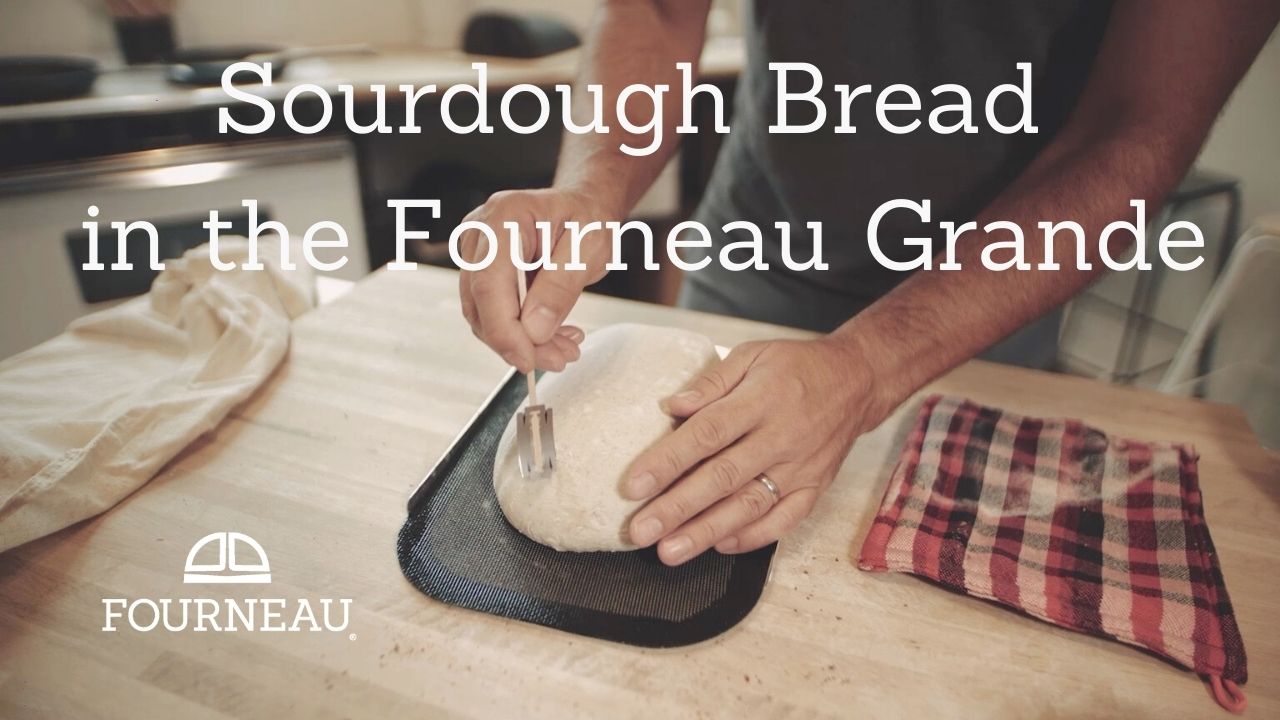
This is one of our favorite sourdough recipes with a suggested schedule and fermentation time-killing activities. We call this the 12/12/12 method: just four simple steps with three periods of 12 hours in between.
Watch Ted make easy sourdough bread in the Fourneau Grande, and scroll down below for the written recipe.
Let's get baking!
12/12/12 Easy Sourdough Bread Recipe
Makes two sourdough loaves
Starter Ingredients:
25 grams active but unfed sourdough starter
100 grams white flour
25 grams rye flour
100 grams cold water
Dough Ingredients:
225 grams active, fed starter
700 grams water
1000 grams white flour
21 grams salt
Directions:
7am Feed the Starter
In a clean jar, combine 25 grams (active but unfed) sourdough starter with 100 grams white flour, 25 grams rye flour and 100 grams cold water. Let sit at room temperature for 12 hours. Go kill some time!
7pm Mix the dough
By now your starter will have tripled in size. In a medium bowl add 225 grams active fed starter and 700 grams water. Do not mix. In a separate bowl add 1000 grams white flour. Now combine the two bowls and mix by hand. Add 21 grams salt and incorporate by hand. Cover your dough with plastic wrap and let sit at room temperature for 12 hours.
7am Form the dough
Form #1: Lightly flour the counter. Using a dough scraper or rubber spatula, scrape the fermented dough onto the floured counter. With floured or wet hands, divide the dough in half and spread each piece roughly into a square shape. Using the envelope fold technique in the video, fold all four sides of the bread in on one another. Gently roll the bottom under itself and into the center to form a circular shape. Do the envelope fold on both pieces of dough separately.
Let the dough rest under a tea towel on the counter for 45-60 minutes.
Form #2: Repeat the same technique as above with one additional envelope fold and pinch the sides as needed. Gently place each dough into a floured banneton with the pinched seam side up. Cover with a tea towel and place into the refrigerator for 12 hours.
7pm Bake:
Place your Fourneau Grande into the oven and pre-heat to 500 degrees. Do not include the silicone baking tray in the pre-heat process. Place the baking tray upside down on top of the banneton and flip the whole thing over. Gently remove the banneton and score the loaf.
With a hot pad, remove the hatch of the Fourneau Grande and insert the baking tray. Using the Fourneau gooseneck pitcher, add water to the baking chamber and close the hatch. Bake for 20 minutes.
Remove the Fourneau hatch, and bake for an additional 15-20 minutes, or to your desired brownness.
You did it! Remove the bread from the oven and let it rest (if you can) for 1 hour before slicing and devouring.

Hi Amy, in our experience it seems like rye flour off of the store shelf has more naturally occurring yeast in it than white flour. Is that true? I do not know. Could it be that rye flour undergoes less processing than white bread flour and thus contains more wild yeast? That is our hypothesis. Anyway, it seems to help make a vigorous starter more quickly. You can definitely leave it out though if you prefer.
Hello! Excited to try this recipe. :) can you please explain the purpose of the rye flour in the starter? Could it be substituted? Thank you!